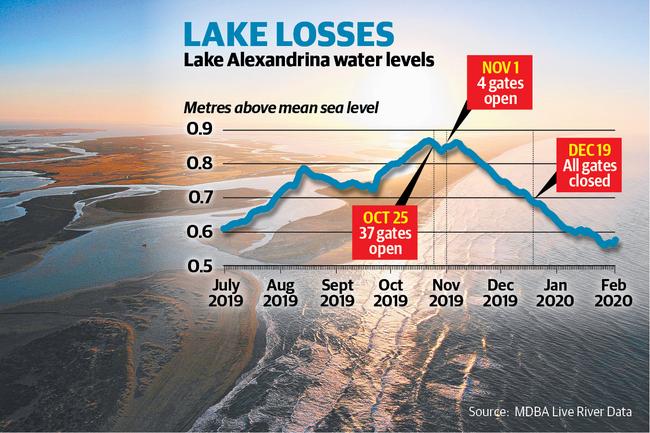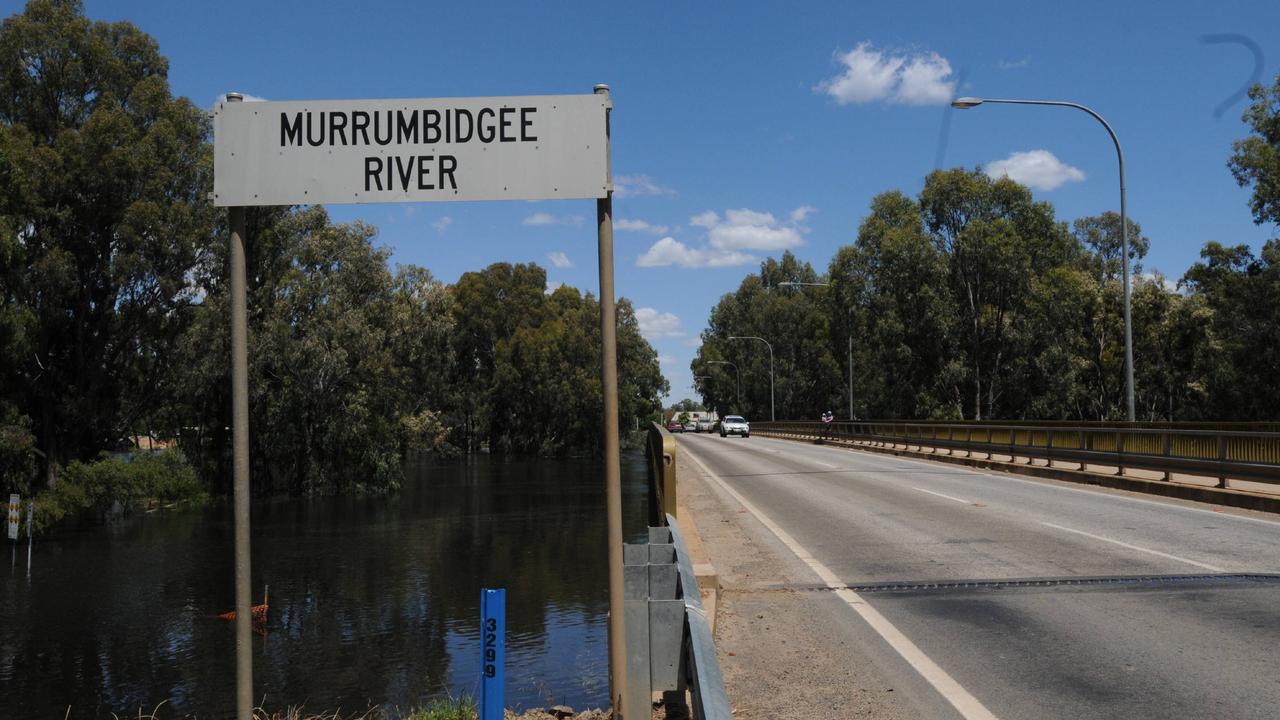Scheme’s draining effect as 583,182 megalitres evaporate off SA’s Lower Lakes
Almost half the water NSW and Victoria poured into South Australia’s shallow 82,000ha Lower Lakes has disappeared into thin air.

DROUGHT and scorching summer heat have sucked 583,182 megalitres out of South Australia’s Lower Lakes in the past seven months.
The massive loss equates to 2712ML a day, which is more than the peak volume of water used by all Goulburn Murray Irrigation District customers on a hot summer day.
The losses are revealed in Murray Darling Basin live river data and South Australia’s Department of Environment and Water figures on barrage releases to the sea.

Since July 1 Victoria and NSW have poured 1.67 million megalitres across the South Australian border in environmental flows and to meet their obligations to the downstream state.
But even with irrigation usage, wetland waterings and losses, there was still 1.19m megalitres left in the Murray River when it reached Lock One at Blanchetown, where it then flowed into the Lower Lakes.
Of that 1.19m megalitres just over half — 603,563ML — was released by the SA Government into the sea, which means 583,182ML remained in the lakes.
Yet nearly all that massive volume has been lost in evaporation off the shallow 82,000ha lakes, given MDBA live river data shows Lakes Alexandrina and Albert’s water levels remain almost the same today as they were on July 1 last year.
Victorian Farmers Federation water council chairman Richard Anderson said the losses reinforced the need for real action on the Lower Lakes.
“There’s some real momentum now on fixing up the Lower Lakes, building Lock Zero,” Mr Anderson said. “It just doesn’t make sense to be losing this water when there’s nothing in the system.”
The NSW Farmers Water Taskforce also this week called for “a review of the viability of the environmental contributions made to South Australian lakes scheme”, given the cost to irrigation communities of supplying what was once consumptive water to the environment.
Both the VFF and NSW irrigators have long criticised the SA Government’s insistence that the Lower Lakes have always been freshwater systems, despite building a network of barrages in the 1940s to hold back the sea.
In December last year the MDBA finally launched a review into the lakes after The Weekly Times revealed three South Australian researchers altered their past findings to back the SA Government’s freshwater claims.
As it stands maintaining the lakes at less than 1500EC (seawater is about 50,000EC) is a key objective of the 2012 Murray Darling Basin Plan.
The CSIRO is leading the team conducting the review, which is due to report back to the MDBA by the end of next month.


